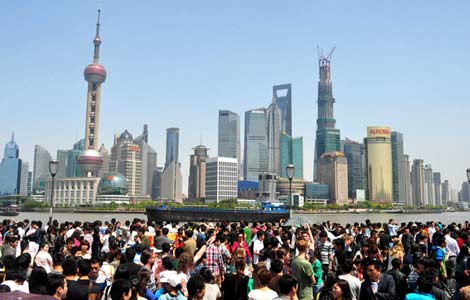
In 2011, Shanghai put forward the idea of building seven new towns in the suburbs, including Songjiang, Jiading, and Jinshan, but most of them have so far failed in their goal of absorbing 1 million residents each.
"People need to be employed when they move to the outskirts. The main industry in the suburbs is manufacturing, while people in downtown areas are good at service industries," said Yu Hongsheng, director of the Institute of Population and Development.
"The current level of public services and the structure of employment in suburbs are not competitive enough to make them satellite towns," he said.
Yu gave the example of Lingang, an area at the southeastern tip of Shanghai and a key location in a planned international shipping center, for which the municipality has drawn up blueprints. Since its construction in 2003, Lingang has become an important location for high-end manufacturing and strategic emerging industries, but the resident population is only 200,000.
"We often find it difficult to hail a taxi here. Not many taxi drivers are willing to come here because of the low population. It's like an empty city at nighttime," said Lin Guangyao, who settled in Lingang last year.
Although colleges have been moved there, the main faculty resources are still in urban areas, said Yu. Many industries face similar problems, as the core scientific research activities are still based in central districts.
The development of Songjiang district can be used as a model of how to proceed, according to Yu. There are colleges, hospitals, institutes of scientific research, multinational companies and service industries in the district.
"Shanghai needs to develop two or three areas with maturing infrastructure like Songjiang and keep making them good competitors of central districts," Yu said.
Solving the issues surrounding Shanghai's population explosion will take the combined efforts of the nation as a whole, say some experts, who believe the root causes lies in the development gap between regions.
"Instead of prosperity for a number of cities, ideal urbanization should involve cities in different areas taking advantage of their superiority in industrial structure and countering the imbalance in the regional economies," said Ren.
"That will help slow down the one-way flow of population migration and reduce the pressure on the megapolis," he said.








